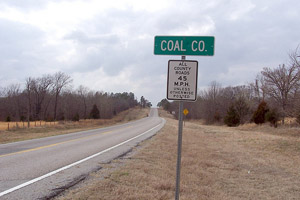
Tax credits were created to help Oklahoma's coal industry compete with other states, namely Wyoming.
Jstephenconn / Flickr


Tax credits were created to help Oklahoma's coal industry compete with other states, namely Wyoming.
Jstephenconn / Flickr
The tax credit task force resumed its mission on Wednesday and examined a trio of tax breaks for Oklahoma’s energy industry.
The first two, the Zero Emission Facility Tax Credit and the Small Wind Turbine Manufacturing Tax Credit, dealt with wind energy. The task force’s second session focused on the Coal Production Tax Credit.
Beyond their ties to energy production, all three tax credits share another quality — they’re fully transferable. The discussion centered on one basic question: Are transferable tax credits the best way for the state to support industries?
Here are three key takeaways:

Bjmccray / Flickr
Industry reps said tax credits are essential for developing wind industry technology and infrastructure.
As state Rep. David Dank, R-Oklahoma City, pointed out in his opening statements, wind energy is becoming a bigger part of the state’s energy “mix.” Oklahoma ranked third in wind capacity in the most recent quarter, according to a report the American Wind Energy Association released Tuesday.
Wind energy brings jobs to rural Oklahoma, Chris Knapp of Apex Wind Energy told the task force, citing a project slated to start in Spring 2012 that will bring about 200 construction jobs and 15 permanent jobs.
[module align=”left” width=”half” type=”pull-quote”]
“We are giving not one but two tax credits for each lump of coal.”
[/module]
But Dank wanted to know how a rural wind farm — many of which are located in sparsely populated western parts of Oklahoma — would benefit Oklahomans in other parts of the state.
Beyond rural jobs, Jamie McAlpine with Edmond-based Chermac Energy said the entire state benefits from lower energy prices and the development of a renewable energy source that Oklahoma is uniquely suited to provide — and sell.
Rep. Mike Reynolds, R-Oklahoma City, questioned the logic in the state subsidizing such an abundant natural resource like wind.
The Small Wind Turbine Manufacturing Tax Credit easily passes the three-part constitutionality test posited in an Attorney General opinion, which the task force is using as a guide by which to evaluate tax incentives that could be eliminated.
Despite being a case study for a constitutionally “firm” incentive, the turbine tax credit is transferrable — a factor that has drawn major scrutiny from Dank and other task force members.
In his opening remarks, Dank lamented the brokering, buying and selling of transferable tax credits, which he called “a major concern,” likening the process to “a big swap meet with millions being traded back and forth.”

Jstephenconn / Flickr
Tax credits were created to help Oklahoma's coal industry compete with other states, namely Wyoming.
The Coal Production Tax Credit fueled a lot of heat at Wednesday’s meeting.
Dank, who said he supports the coal industry, called the credits a “poster child for just about everything that is wrong” with Oklahoma’s tax incentives.
According to a September report by non-profit journalism outfit Oklahoma Watch, coal tax credits cost Oklahoma more than $60 million in lost tax revenue over the last eight years.
That averages more than $15,000 a year for each of the estimated 500 people directly employed by mining companies or working for businesses that contract with the mines, such as trucking and welding firms, wrote Oklahoma Watch’s Warren Vieth.
Insurance companies are a big buyer transferable coal credits, which are sold at 80 to 90 cents on the dollar and used to offset their state tax liabilities.
Instead of corporate income taxes, insurance companies pay a flat, 2.25 percent tax on premiums, wrote The Oklahoman’s Michael McNutt.
The credits were defended by representatives of coal producers and consumers, like AES Shady Point, a power station near Panama, Okla. Shady Point has used 65 percent of all coal produced in Oklahoma since 2007, said company representative Lundy Kiger.
In 1989, lawmakers created a $1-per-ton credit that subsidized purchasing Oklahoma coal. It was later upped to $2 and, in a 2006 legislative special session, increased to $5 per ton.
“We are giving not one but two tax credits for each lump of coal,” Dank said.
Lawmakers created the credits to help the industry compete with other states, not to provide a steady stream of cash to coal producers, Dank said.
Without tax credits, AES couldn’t guarantee they’d use Oklahoma coal, Kiger said.
The coal credit was among those put under a temporary moratorium last year. While no new credits are being generated, the credits can be carried forward up to five years. The moratorium is set to sunset in July 2012.
The coal credit was extended for two additional years in a bill that was filed in the closing hours of last year’s legislative session.
Dank also criticized the accountability and controls of the coal credit. Lawmakers have no way of knowing if producers and buyers would be profitable without the tax credit, he said.